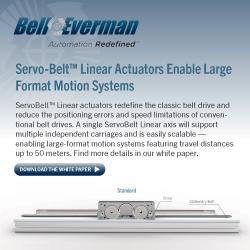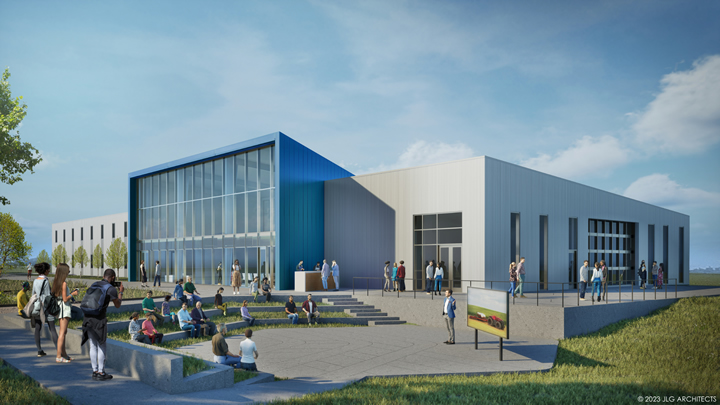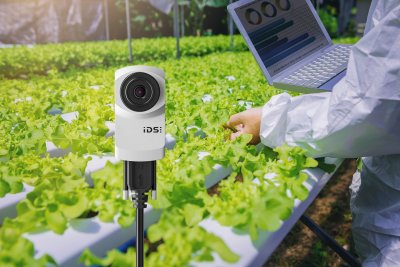AGCO Announces Sustainable Test Farm in North Dakota
"Dakota Smart Farm" is dedicated to developing sustainable farming practices and high-value retrofit precision technology solutions.
Using technological innovation for environmental benefits
The industrial camera manufacturer IDS Imaging Development Systems GmbH from Obersulm feels responsible for keeping its ecological footprint as small as possible. This is reflected in its own business activities.
NET ZERO AND CROP NUTRITION: WHEN IS ENOUGH, ENOUGH?
Climate change, driving extreme weather events and industry commitments to deliver net zero are focusing the attention of the potato supply chain on how to reduce the carbon footprint of the crop.
The Role of Biodiversity in a Profitable and Sustainable Farm
The biological environment encompasses many sub-factors, such as soil health, water retention, biodiversity, and chemical composition, just to name a few. With so many factors at play, it can be hard to know where to start, and which should be the priority.
Ethical Solutions to 5 Common Issues Caused by Industrial Agriculture
Industrial agriculture enables higher efficiency levels and product volumes, feeding more people and earning businesses higher profits.
Seafields will develop stationary aquafarms together with MacroCarbon
By baling and storing large quantities of the seaweed at over 4000 metres below sea level in the deep abyssal plain of the Atlantic Ocean, the company aims to trap a gigatonne every year of atmospheric carbon dioxide for thousands of years.
Decreasing Soil Tillage May Reduce Carbon Release
Decreasing soil tillage can reduce carbon emissions. Reducing these greenhouse gas emissions in agriculture can help combat climate change and lead to a more sustainable agricultural system - and ultimately a more sustainable environment.
IDTechEx Asks If Emerging Technologies Can Make Food Production More Sustainable
Today, food production represents approximately 20% of global greenhouse gas emissions. In addition, food production is associated with other negative impacts, including high water demand, severe soil degradation, eutrophication, and more.
CALIFORNIA DEPARTMENT OF FOOD AND AGRICULTURE AND STATE BOARD OF FOOD AND AGRICULTURE LAUNCH AG VISION FOR THE NEXT DECADE
The plan - which will guide areas of focus for CDFA and serve as a catalyst for action with farmers and ranchers, and other California agencies and partners - is being hailed as not just a plan for agriculture, but a plan to benefit every Californian.
Smart ocean research pod to protect coastlines and grow food
The research pod is a key component of Tekmara's plan to launch grow pods that can produce food without the use of conventional fresh water, power, or soil.
Driving the greenhouse industry to sustainable growth
The challenge for commercial greenhouse operators is that they are often large and complex systems that require multiple processes to function harmoniously. Reliability and consistency are imperative here.
Traditional & vertical farm to partner on their road to Net Zero
Two long-standing farming families have joined forces to realise their ambition to reach Net Zero by using traditional methods supported with cutting-edge technology, including an onsite vertical farm powered by solar panels.
Vertical Distribution of Growing Plants Results in Less Land and Soil Used
Using a close looped water recycling system, Kalera uses an estimated 95% less water than traditional field farming. This is especially important for the western parts of the United States
Hybrid Microgrid System Helps Company Meet Production and Sustainability Goals
Themar al Emarat selected the local Cat® dealer, Al-Bahar, to design, install and commission a comprehensive hybrid microgrid solution from Caterpillar that fully integrates advanced power generation, control and monitoring technologies.
How Can Greenhouses, Vertical Farms & Container Farms Work Together?
CEA is importantly not the answer to all the systemic problems in food production, but it is a powerful method that adds much needed resilience into supply chains, as the climate across the globe changes.
Records 1 to 15 of 45
Featured Product

Cartesian robots with the right design upgrades can take over manual transfer operations with ease
Manufacturing and packaging operations that still depend on manual material or parts handling operations can reap immediate benefits from a type of automation based on long-travel Cartesian robots with custom end-of-arm tooling (EOAT) and advanced sensing capabilities. These robots can support a variety of machines - performing otherwise manual tasks such as machine tending or transferring in-process parts - making long-travel Cartesian transfer robots a major upgrade to processes and operations. Download the White Paper from Bell-Everman



.jpg)

.jpg)










